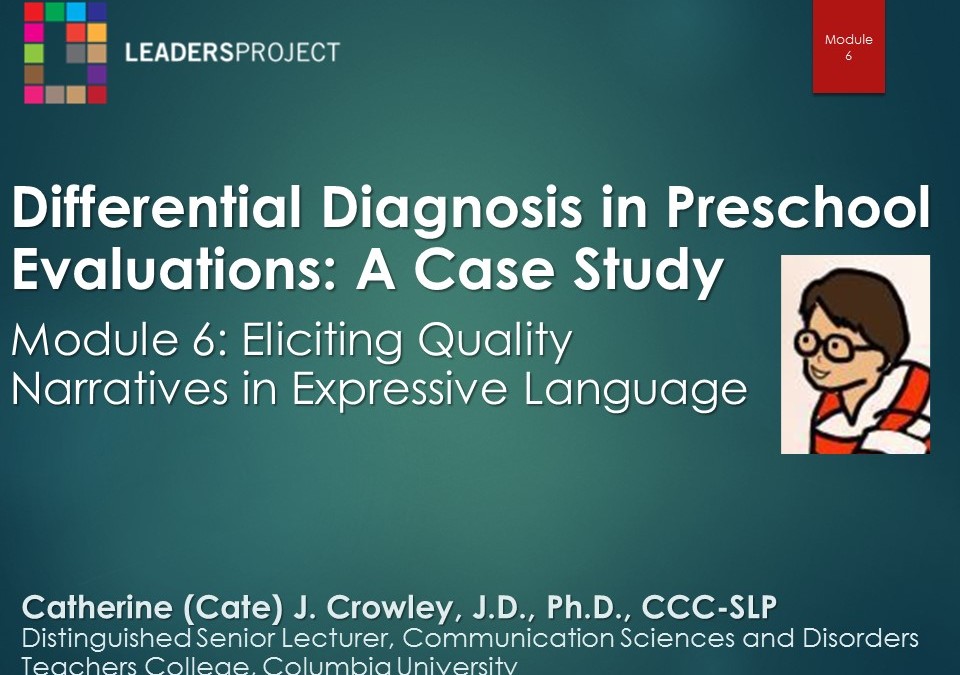
Eliciting Quality Narratives in Expressive Language (DDPE Playlist: Module 6)
In this module Cate shows us how to elicit a quality narrative sample in order to assess expressive language.

In this module Cate shows us how to elicit a quality narrative sample in order to assess expressive language.
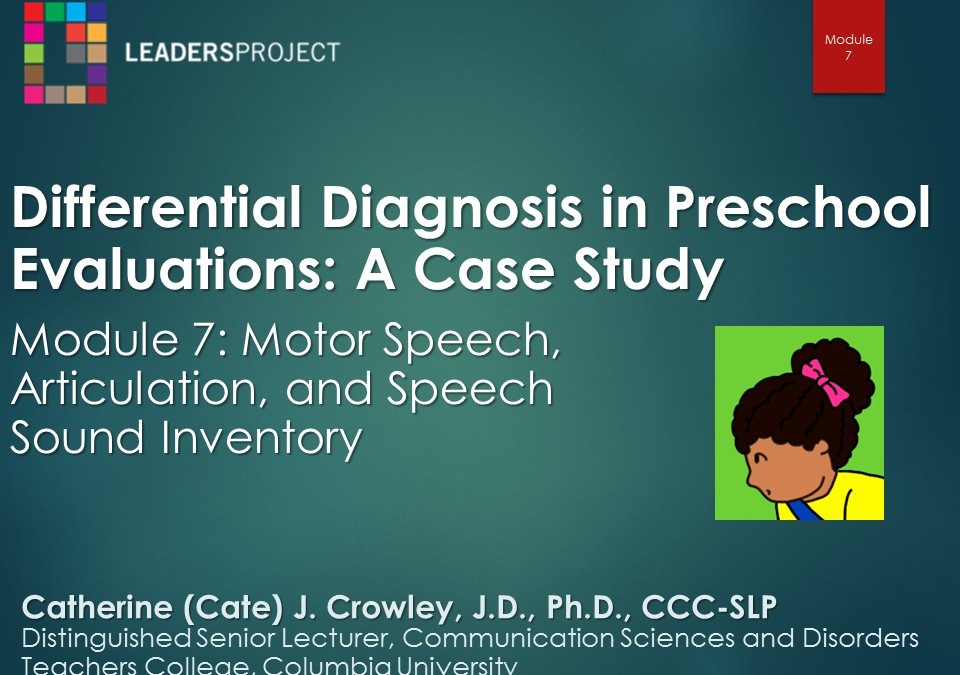
In this module, Cate continues with the evaluation by performing an assessment of Alex’s speech and articulation through the use of an articulation screener from the PLS-5.
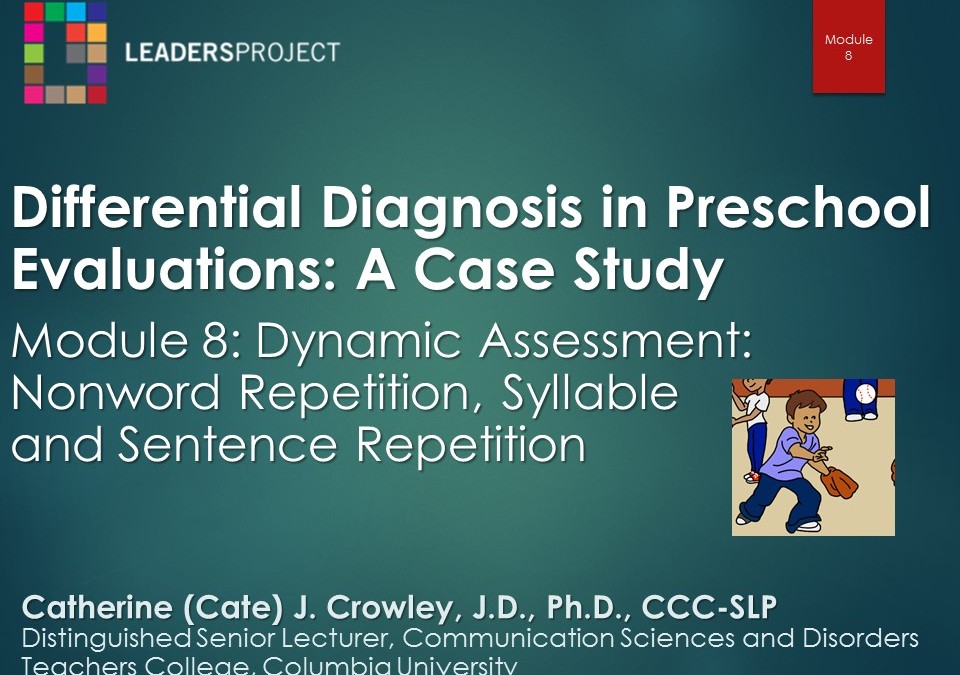
In this module Cate discusses using dynamic assessment using repetition of nonwords, sentences and syllables (Dollaghan & Campbell, 1998) to help confirm Alex’s diagnosis of developmental apraxia.
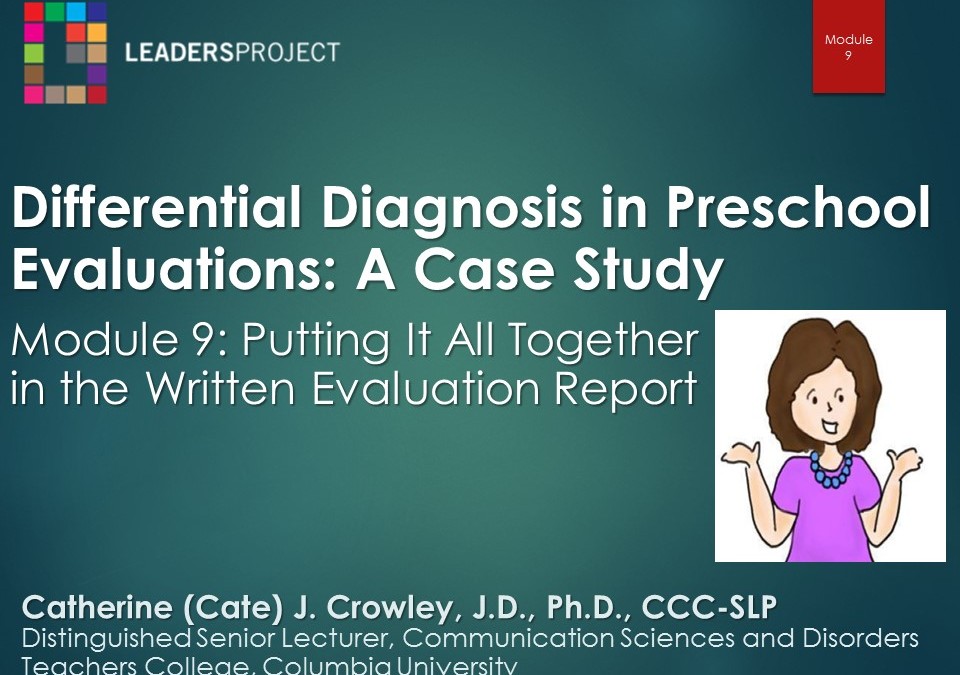
This module reviews how Cate combines all the information gathered during the assessment and puts it together into a diagnosis and final report.
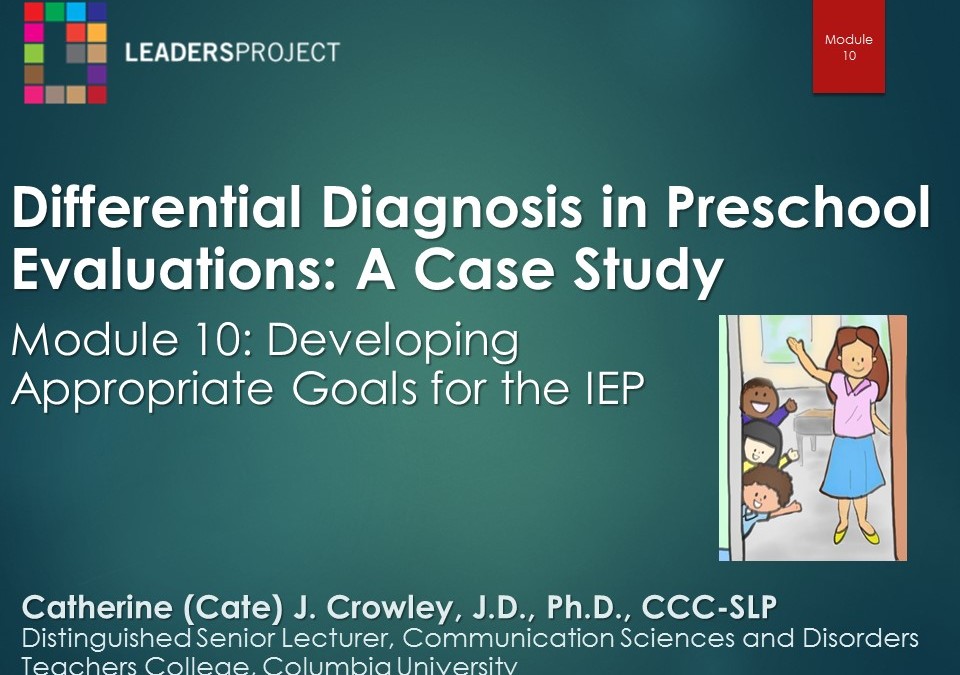
In this module, Cate reviews the conclusions of the evaluation and works to develop goals that will provide the support that Alex really needs.
This evaluation was done by David Usdan, PhD for a 2;9 month old boy diagnosed with Autism Spectrum Disorder.
This document presents appropriate goals for “Alex,” a 2;10 old English/ Spanish bilingual who was diagnosed with apraxia.
This document contains the nonword tasks first developed by Dollaghan & Campbell (1998) as part of assessment that is less biased towards diverse populations.
This is a special education field advisory that was released in December, 2014. It details the use of standardized scores with culturally and linguistically diverse children.
Parts of the CELF-5 can be used to probe for information and language samples, but its limitations prevent it from being used to identify disorder or disability.